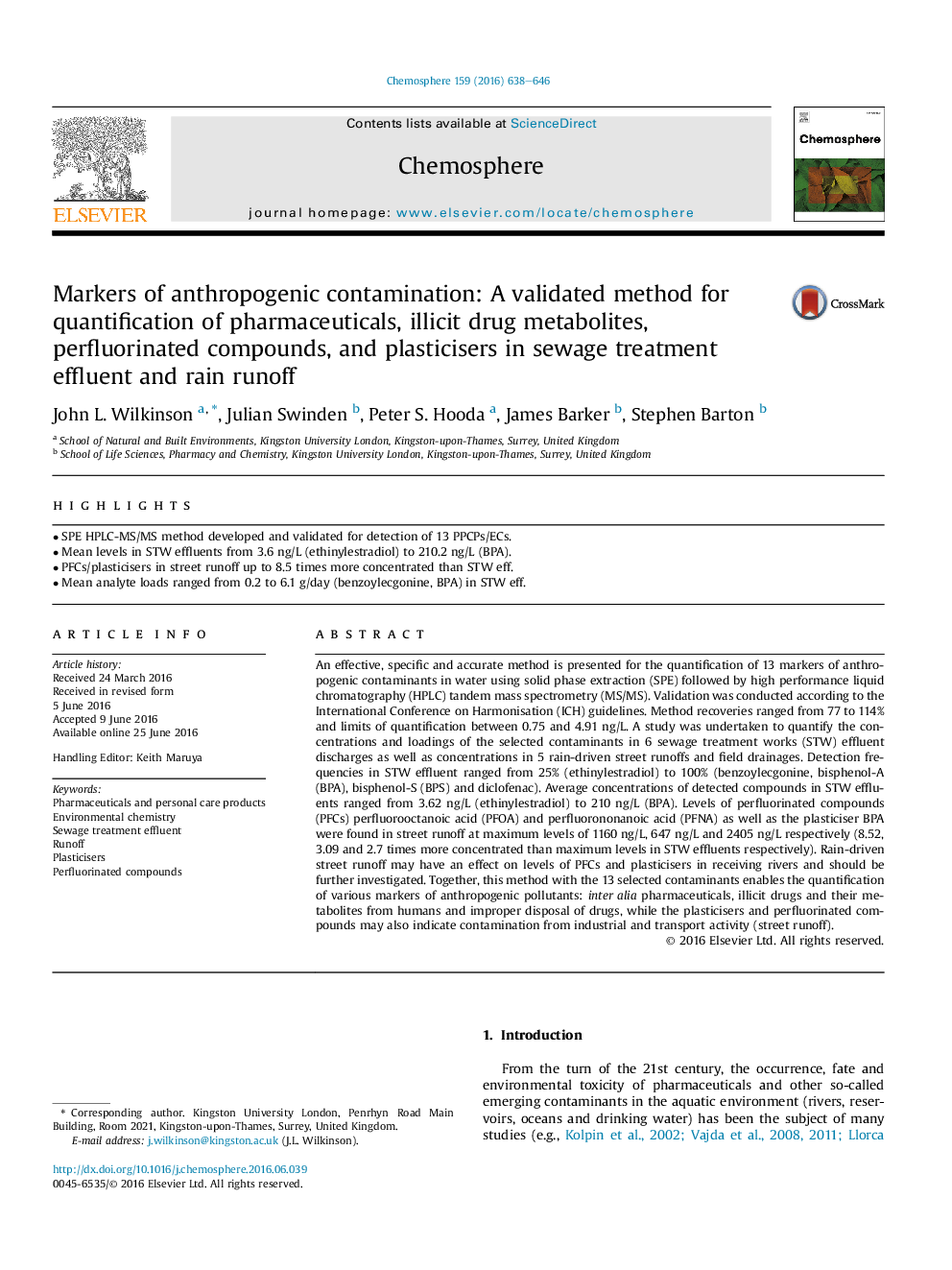| کد مقاله | کد نشریه | سال انتشار | مقاله انگلیسی | نسخه تمام متن |
|---|---|---|---|---|
| 4407435 | 1618812 | 2016 | 9 صفحه PDF | دانلود رایگان |
• SPE HPLC-MS/MS method developed and validated for detection of 13 PPCPs/ECs.
• Mean levels in STW effluents from 3.6 ng/L (ethinylestradiol) to 210.2 ng/L (BPA).
• PFCs/plasticisers in street runoff up to 8.5 times more concentrated than STW eff.
• Mean analyte loads ranged from 0.2 to 6.1 g/day (benzoylecgonine, BPA) in STW eff.
An effective, specific and accurate method is presented for the quantification of 13 markers of anthropogenic contaminants in water using solid phase extraction (SPE) followed by high performance liquid chromatography (HPLC) tandem mass spectrometry (MS/MS). Validation was conducted according to the International Conference on Harmonisation (ICH) guidelines. Method recoveries ranged from 77 to 114% and limits of quantification between 0.75 and 4.91 ng/L. A study was undertaken to quantify the concentrations and loadings of the selected contaminants in 6 sewage treatment works (STW) effluent discharges as well as concentrations in 5 rain-driven street runoffs and field drainages. Detection frequencies in STW effluent ranged from 25% (ethinylestradiol) to 100% (benzoylecgonine, bisphenol-A (BPA), bisphenol-S (BPS) and diclofenac). Average concentrations of detected compounds in STW effluents ranged from 3.62 ng/L (ethinylestradiol) to 210 ng/L (BPA). Levels of perfluorinated compounds (PFCs) perfluorooctanoic acid (PFOA) and perfluorononanoic acid (PFNA) as well as the plasticiser BPA were found in street runoff at maximum levels of 1160 ng/L, 647 ng/L and 2405 ng/L respectively (8.52, 3.09 and 2.7 times more concentrated than maximum levels in STW effluents respectively). Rain-driven street runoff may have an effect on levels of PFCs and plasticisers in receiving rivers and should be further investigated. Together, this method with the 13 selected contaminants enables the quantification of various markers of anthropogenic pollutants: inter alia pharmaceuticals, illicit drugs and their metabolites from humans and improper disposal of drugs, while the plasticisers and perfluorinated compounds may also indicate contamination from industrial and transport activity (street runoff).
Journal: Chemosphere - Volume 159, September 2016, Pages 638–646
